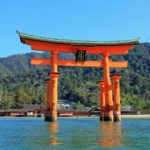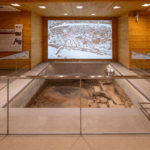War Remnants on Miyajima
— A Trip to the Artillery Battery Ruins Secretly Slumbering on the Island of the Gods
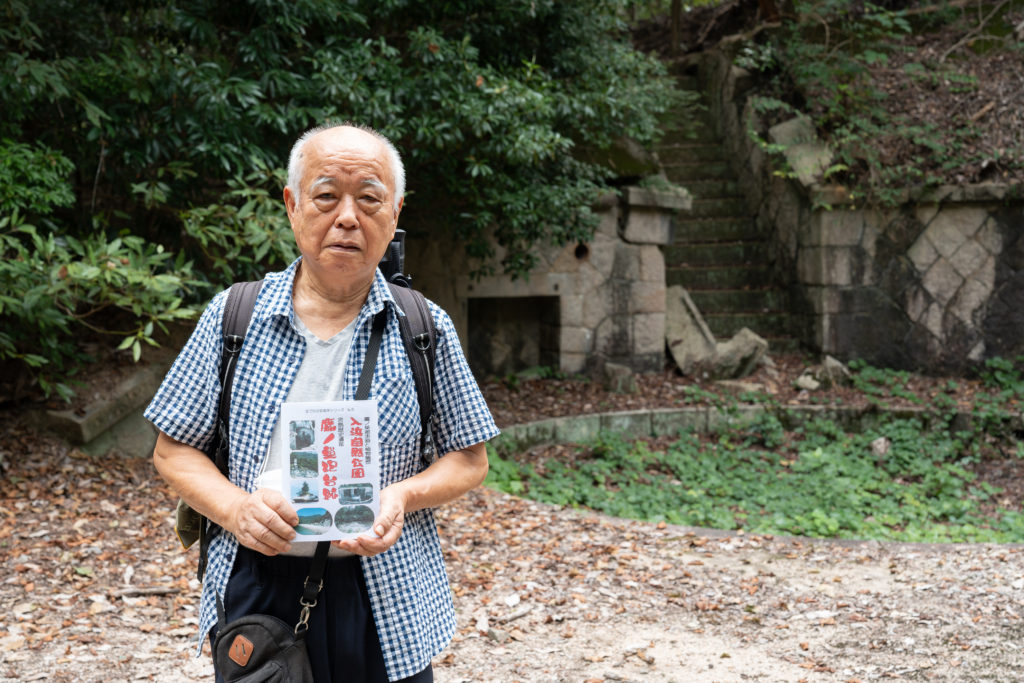
Miyajima has been revered as the “Island of the Gods” and is home to Itsukushima Shrine, which is said to have been built in 592, the year of Emperor Suiko’s accession. Many tourists from inside and outside Japan come to Miyajima to sightsee, but few know of the artillery battery ruins and other military remains resting there.
Nakamichi Tsutomu of the Miyajima Zone Park Volunteer Association explains why.
“In 1889, a naval station was established in Kure. And at the beginning of the First Sino-Japanese War in 1894, the Imperial General Headquarters, a supreme command authority directly under the Emperor, was established in Hiroshima. To protect these bases from enemy warships, forts and batteries were built on Miyajima Island, where enemy warships could be spotted quickly. The location of these artillery batteries and other facilities was a military secret and unknown to the public at the time. I’m sure the enemy did not expect to find artillery batteries at the Island of the Gods.”
A 157-meter-tall hill stands just behind Itsukushima Shrine, overlooking the Itsukushima Straits. Atop this hill is the Takanosu Upper Battery of the former Hiroshima Bay Fortress. The surprisingly well-preserved stone and brick structures still remain in the mountains today and are only 30 minutes away on foot from the roadway.
On Miyajima, all trees and plants have been regarded as belonging to the gods, and cutting them down requires an application to the Agency for Cultural Affairs. Because of this, thick virgin forests line the mountain paths. Garrisoning here could not have been easy. The first thing we encountered were the remains of stone latrines and an approximately 18-meter-deep well (which the soldiers at the time used for cooking) in a slightly open area. Further along the mountain path lies a plaza surrounded by stone walls and the ruins of six cannon mounts where 28 cm howitzers were said to have been installed.
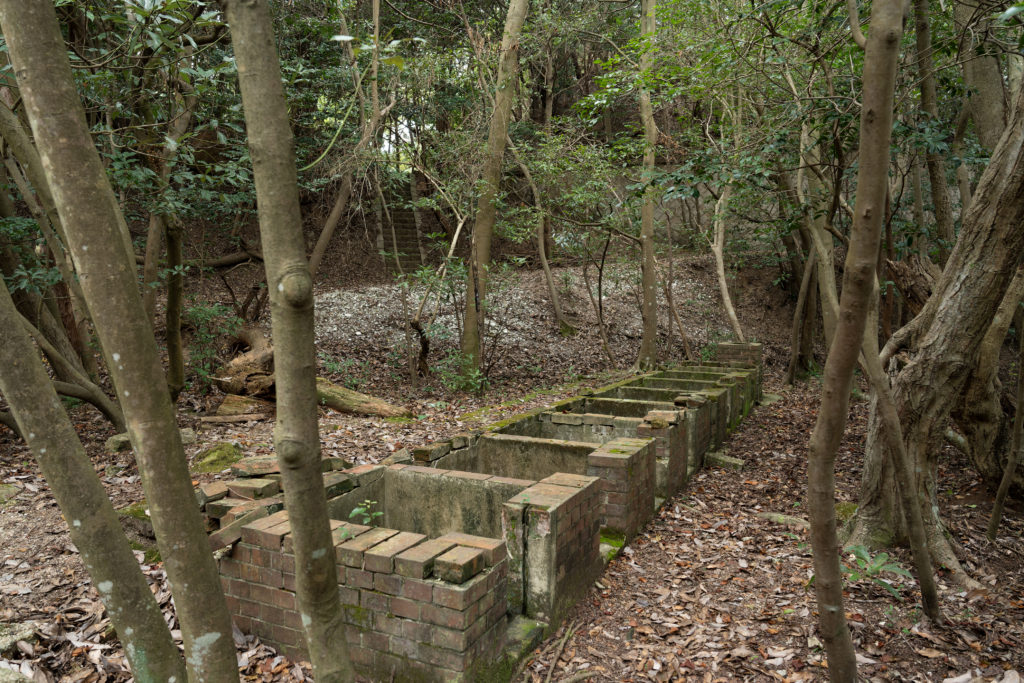
Ruins of latrines used by the soldiers at the time
The ruined mounts are positioned in pairs in a mortar-shaped plaza separated by stone walls, with the stone walls having holes drilled in for speaking tubes. The side facing the sea was designed to conceal the batteries from enemy ships, with a liaison road built along the ridgeline for security. Meanwhile, at the rear of the plaza rests the remains of a brick shell yard where shells were laid out. As Nakamichi guided us around the area, we could imagine what it must have been like back then.
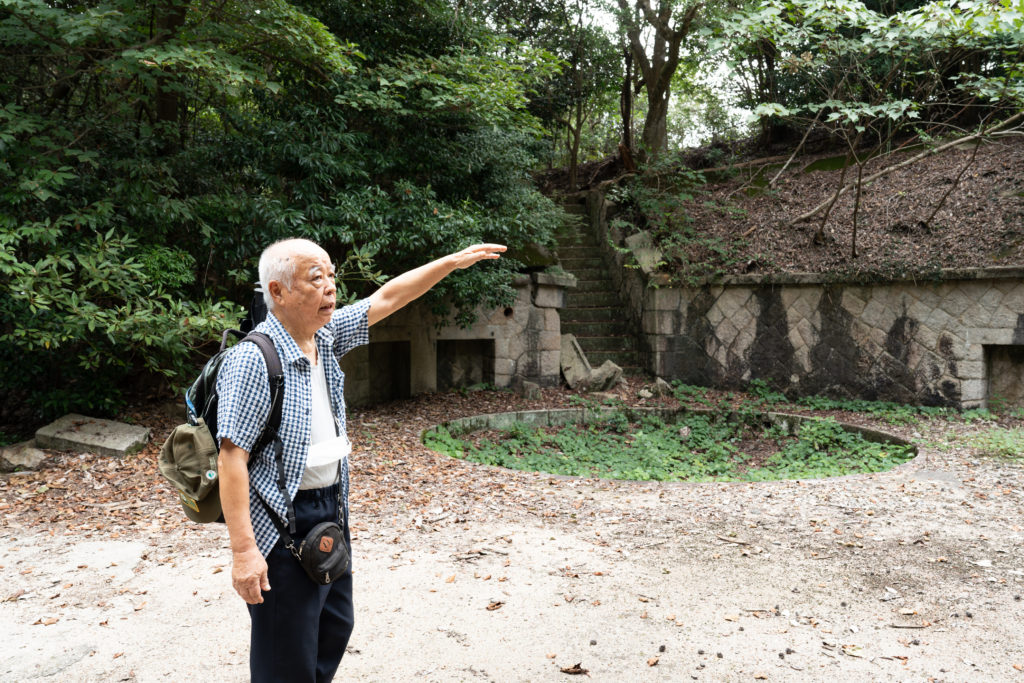
Ruins of artillery batteries positioned outside the sight of the enemies on the sea
“They remain ever so beautiful, not even showing the slightest sign of collapse. The people of that time must have carefully built it using advanced techniques,” said Nakamichi as he traced the joints of the stone walls.
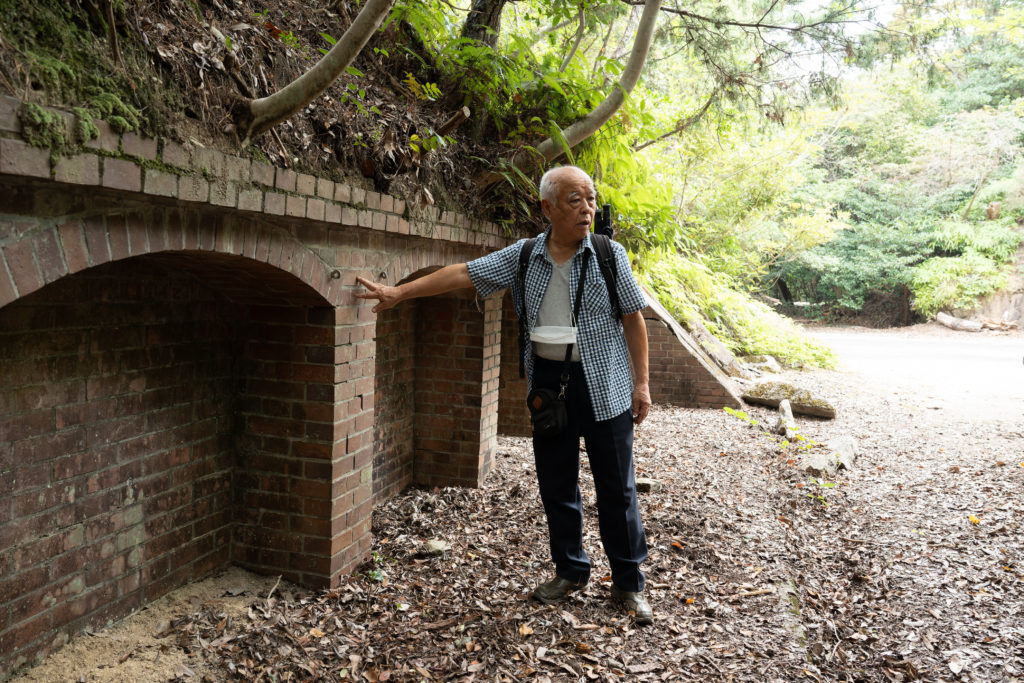
Brick shell yard
After going through the plaza and an exhausting 200-meter climb on the stone stairs, we finally reached the artillery director post overlooking the sea at the top of a mountain. In the middle of the stairway, there was a hole drilled to make way for a speaking tube connected to the wall of the artillery command post. “It’s said that once the director post spots an enemy ship, the artillery command post would promptly calculate the warship’s direction and the angle at which to drop the howitzers, relaying this information to the soldiers standing by in front of the speaking tubes,” said Nakamichi. From there, the soldiers would run down the stone steps at full speed and report to the battery’s commander.
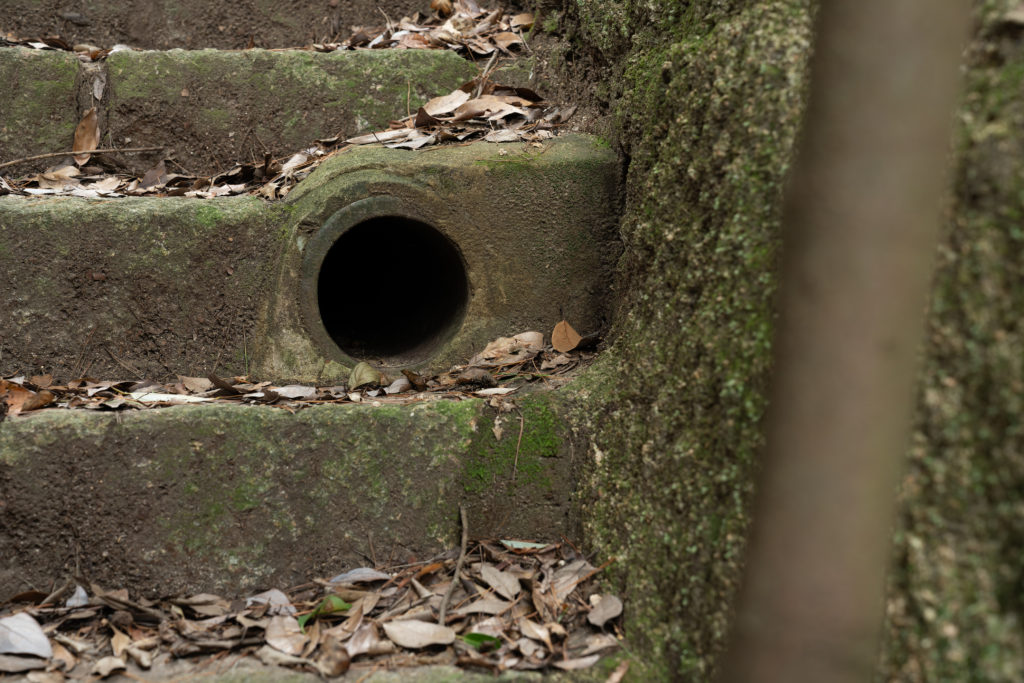
The speaking tube in the middle of the staircase
The sturdy stone regimental command post remains near the artillery director post. The remains of the regimental commander’s sleeping quarters are also there. It is barely big enough for a small bed and does not look very comfy. The shelters for the soldiers to hide in during enemy attacks still remain in the mountains, indicating their preparedness in case a fight ensues.
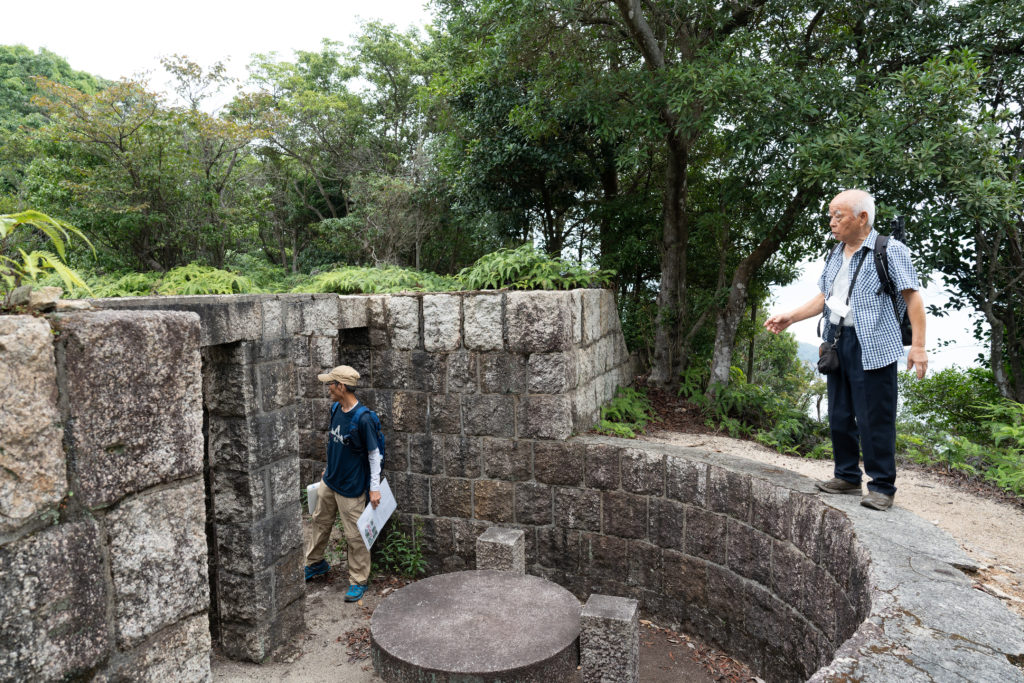
The stone regimental command post
Fortunately, these batteries were never used in actual battle. “Although live fire cannon exercises were held several times a year in preparation for actual battles, the strategic significance of the Miyajima Battery faded when the batteries at Bungo Channel and Shimonoseki were completed. By the time the Pacific War began, the weapons at Miyajima were apparently dismantled and moved to the war zone,” said Nakamichi.
The artillery battery ruins remain almost in their original form on Miyajima and are now a valuable heritage that provides insight into the history and advanced construction technology of the Meiji era.
Tourists rarely visit the artillery battery ruins in the mountains. Even so, Nakamichi and other members of the Miyajima Zone Park Volunteer Association continue to protect the site carefully, cleaning the area and removing dead leaves and other debris every year.
Setonaikai National Park Miyajima Zone Park Volunteer Association
(Secretariat) Ministry of the Environment, Chugoku-Shikoku Regional Environment Office, Hiroshima Office
Takanosu Upper Battery
Miyajima-cho, Hatsukaichi City, Hiroshima Prefecture
Tags associated with this article



